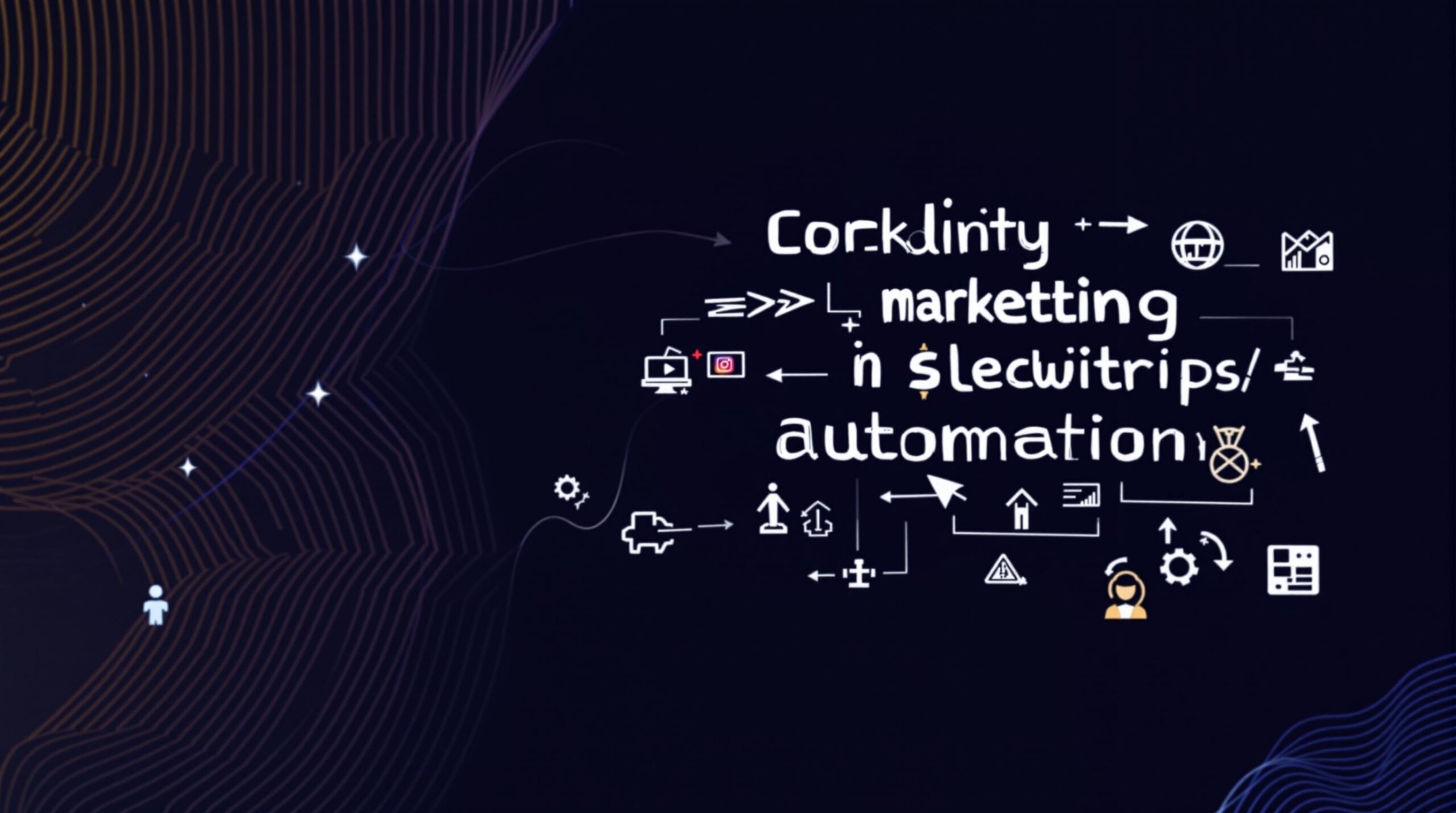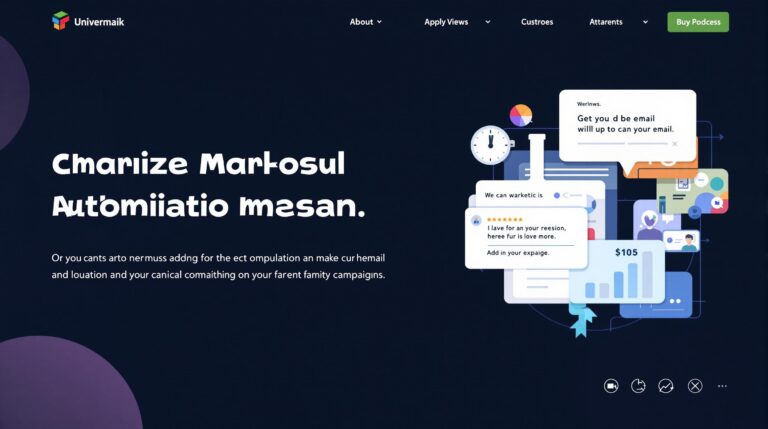How to Scale Your Content Creation with the Help of Automation
Content automation is revolutionizing how marketing teams create and distribute materials at scale, with 75% of marketers confirming AI helps them produce more content than traditional methods. The combination of advanced AI writing tools and strategic workflow automation now enables even small teams to scale content creation while maintaining quality and brand consistency.
Key Takeaways
- AI tools can automate up to 60% of repetitive tasks in content creation workflows
- The Generative AI content creation market is growing at a 31.2% CAGR, indicating widespread adoption
- Companies using centralized content systems see 27% faster content turnaround times
- Cross-functional teams produce 41% more audience-aligned content than siloed departments
- Only 5% of marketers fully automate content without human oversight for quality control
The Automation Revolution in Content Marketing
The data clearly shows we’re in the middle of a content automation revolution. With 67% of marketing executives crediting AI with enhancing their content capabilities, it’s no surprise that the Generative AI market in content creation is expanding at a remarkable 31.2% compound annual growth rate.
This rapid growth isn’t just hype – it’s driven by real results. Marketing teams are discovering that automation allows them to produce more content faster while maintaining quality standards. The tools powering this shift aren’t just simple text generators; they’re sophisticated solutions that can handle everything from grammar checks to SEO optimization and plagiarism detection.
Perhaps most telling is that 70% of the Generative AI market is now dominated by software solutions specifically designed for content creation and marketing. This indicates a maturing technology ecosystem that’s becoming increasingly specialized for content marketing applications.

Building Your Automated Content Creation Framework
Creating a framework for automated content creation involves strategically combining AI tools with human expertise. According to research, AI tools can automate up to 60% of repetitive tasks like grammar checking, SEO optimization, and plagiarism detection.
To build an effective framework, I recommend starting with these foundational elements:
- Content ideation and research automation (used by 33% of marketers)
- Draft generation systems (leveraged by 25% of content teams)
- Editing and optimization workflows
- Distribution and promotion automation
Backlinko’s 10-step scaling framework demonstrates the power of a well-designed system, improving revenue by 77% through structured processes like detailed content briefs and strategic editor hiring. The key is finding the right balance between automation and human input to maintain the expertise, experience, authoritativeness, and trustworthiness (EEAT) that search engines reward.
A successful content automation strategy doesn’t replace humans but instead frees them from mundane tasks to focus on strategic and creative work.
Selecting the Right AI Tools for Your Content Strategy
Not all AI content tools are created equal. When selecting solutions to scale your content creation, focus on tools that align with your specific content needs and production goals. Here’s how some of the leading platforms compare:
Journalist AI stands out for its ability to auto-publish SEO-optimized articles with built-in plagiarism checking, making it ideal for news-oriented content teams needing rapid publication capabilities. According to TryJournalist, their platform enables consistent publishing schedules without constant oversight.
For teams needing versatile content across multiple channels, Jasper AI offers multilingual content generation for various formats from blogs to social media. BrandWell takes a different approach, creating 3,000-word drafts in under 10 minutes while incorporating SEO research directly into the content creation process.
Strategic content planning benefits from tools like Semrush Topic Research, which identifies high-traffic keywords and content gaps to inform your creation calendar. For enterprises with strict brand guidelines, Acrolinx ensures governance and style adherence across all content, regardless of who (or what) creates it.
The ideal approach often involves combining several content automation tools to create a comprehensive solution tailored to your production needs.
Centralizing Your Content Operations for Maximum Efficiency
Content centralization dramatically improves production efficiency. Companies using centralized systems see 27% faster content turnaround times compared to organizations with fragmented approaches. This improvement comes from streamlining approval processes and eliminating redundant work.
Automated workflows represent another major efficiency opportunity, reducing production time by 30-50% according to ContentManagementCourse. Tools like Cflow facilitate these workflows by automating task assignments, reminders, and approval routing to keep content moving smoothly through your production pipeline.
Integration with your content management system is essential for seamless operations. WordPress and similar platforms can be enhanced with automation plugins to create a cohesive system. This integration enables:
- Automatic content scheduling
- Metadata and tag management
- Template-based publishing
- Cross-channel distribution
Modular content approaches further enhance efficiency by allowing teams to repurpose pre-approved components across multiple pieces. This strategy, highlighted in Spotify’s automated marketing case study, enables rapid scaling across channels without starting from scratch each time.
Optimizing Team Structure and Collaboration
Team structure significantly impacts content scaling success. Research shows that cross-functional teams produce 41% more audience-aligned content than siloed departments. This collaborative approach ensures various perspectives inform content creation, resulting in more comprehensive and relevant material.
When implementing automation, clearly defined roles become even more important. I recommend establishing these key positions in your content ecosystem:
- Strategy directors (focusing on content goals and audience needs)
- AI prompt engineers (crafting effective inputs for generative AI)
- Quality control editors (ensuring automated content meets standards)
- Distribution specialists (maximizing content reach across channels)
Pairing domain experts with AI tools creates a powerful combination that preserves credibility while increasing output. Subject matter experts can provide the specialized knowledge that AI may lack, while automation handles formatting, optimization, and distribution tasks.
Automated workflows reduce manual tasks by approximately 60%, according to MKAI, freeing team members from repetitive work to focus on creative and strategic contributions that drive greater impact.
Quality Control in Automated Content Production
Quality control remains essential when scaling with automation. Research indicates that 35% of AI-generated content requires human editing for EEAT compliance – the expertise, experience, authoritativeness, and trustworthiness factors that search engines prioritize.
Only 5% of marketers fully automate content creation without human oversight, according to Narrato’s industry survey. This highlights the importance of establishing robust editorial standards and review processes specifically designed for AI-assisted content.
I recommend implementing a tiered quality control system:
- Automated checks (grammar, plagiarism, readability)
- Editorial review (factual accuracy, flow, brand voice)
- Subject matter expert validation (technical accuracy)
- Final approval (compliance with overall standards)
Tools like Acrolinx can provide real-time style guide adherence, flagging issues before content even reaches human editors. This proactive approach catches problems early, saving time in the revision process while maintaining high standards.
The key is designing quality control processes that are scalable themselves, using automation where appropriate while preserving human judgment for aspects where it adds the most value.
Measuring the Impact of Your Automated Content Strategy
Measuring results is crucial for refining your automated content approach. High-performing blogs achieve conversion rates above 5%, according to Databox, providing a benchmark for success. Meanwhile, AI-optimized content typically improves click-through rates by 1.5x compared to purely manual efforts.
Focus on these key metrics to evaluate your automated content strategy:
- Traffic metrics (sessions, page views, unique visitors)
- Engagement metrics (time on page, bounce rate, scroll depth)
- Conversion metrics (leads generated, sales attributed)
- Efficiency metrics (production time, cost per piece)
The average click-through rate hovers around 2%, while time on page exceeding 5 minutes generally indicates strong engagement. Setting up dashboard metrics using tools like Google Data Studio helps visualize performance trends across these dimensions.
Regular performance analysis allows for continuous improvement of both your content and your automation process. By identifying what works best, you can refine your templates and processes to replicate success at scale.
Case Study: Spotify’s Automated Content Marketing Success
Spotify offers an excellent example of successful content automation at enterprise scale. Their engineering team developed a system to automate ad campaign creation across multiple channels, dramatically increasing their marketing reach while maintaining brand consistency.
Central to Spotify’s approach was a modular content strategy that allowed for the creation of standardized components that could be mixed and matched for different audiences and platforms. This enabled them to scale across numerous channels without requiring completely custom content for each.
Before automation, Spotify’s marketing team could manage only a limited number of campaigns manually. After implementing their automated system, they saw:
- 5x increase in campaign volume
- 70% reduction in production time
- Consistent messaging across all markets
- Improved targeting precision
The key takeaway from Spotify’s methodology is that successful automation requires thoughtful upfront strategic planning. By designing modular content systems with clear templates and rules, they created a framework that could reliably generate effective marketing materials at unprecedented scale.
This approach demonstrates how content automation tools and strategies can transform marketing operations when implemented with careful consideration of both creative needs and technical capabilities.
Sources
Acrolinx – How to Scale Content Creation
Market.us – Generative AI in Content Creation Market Demand








